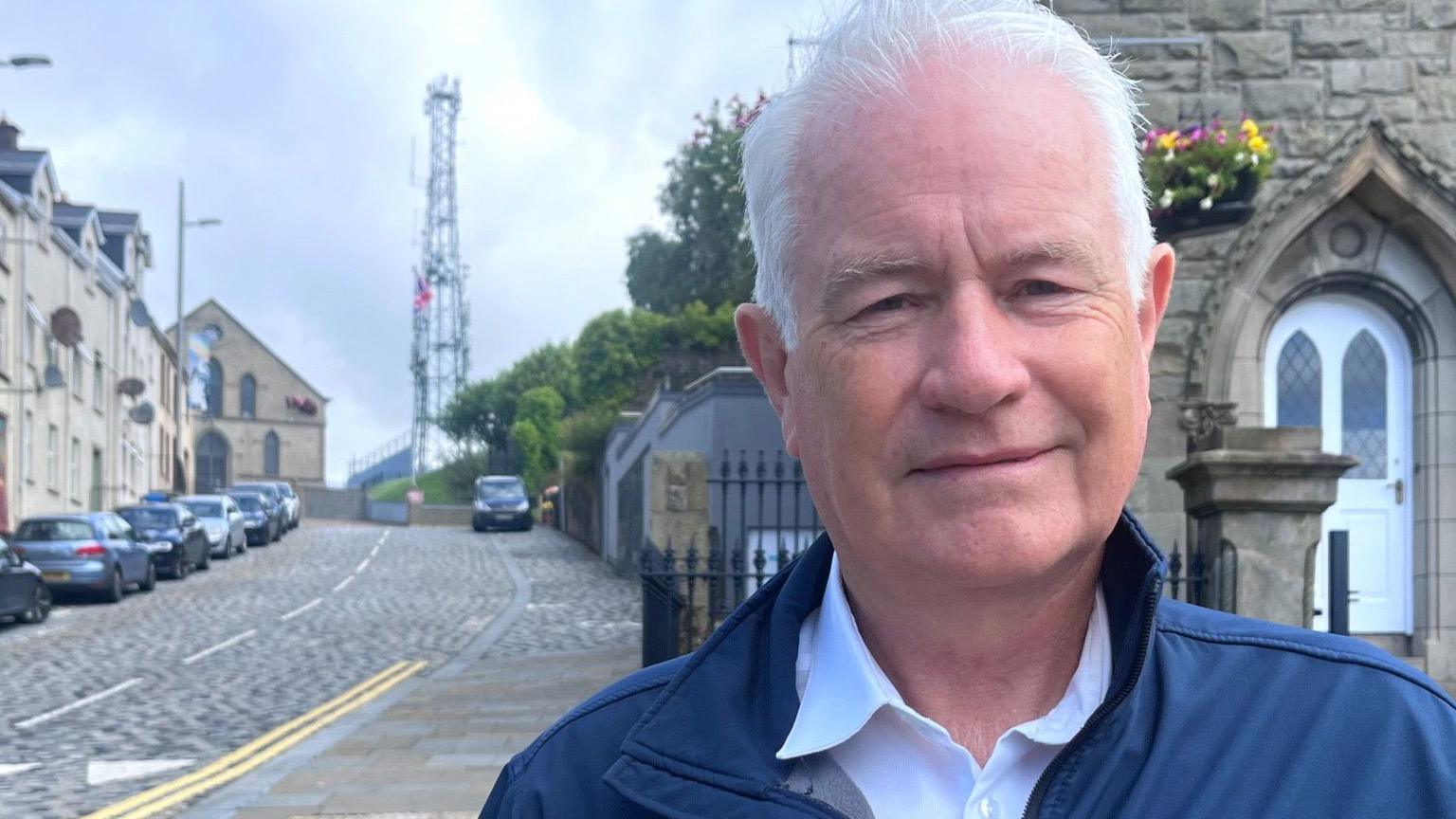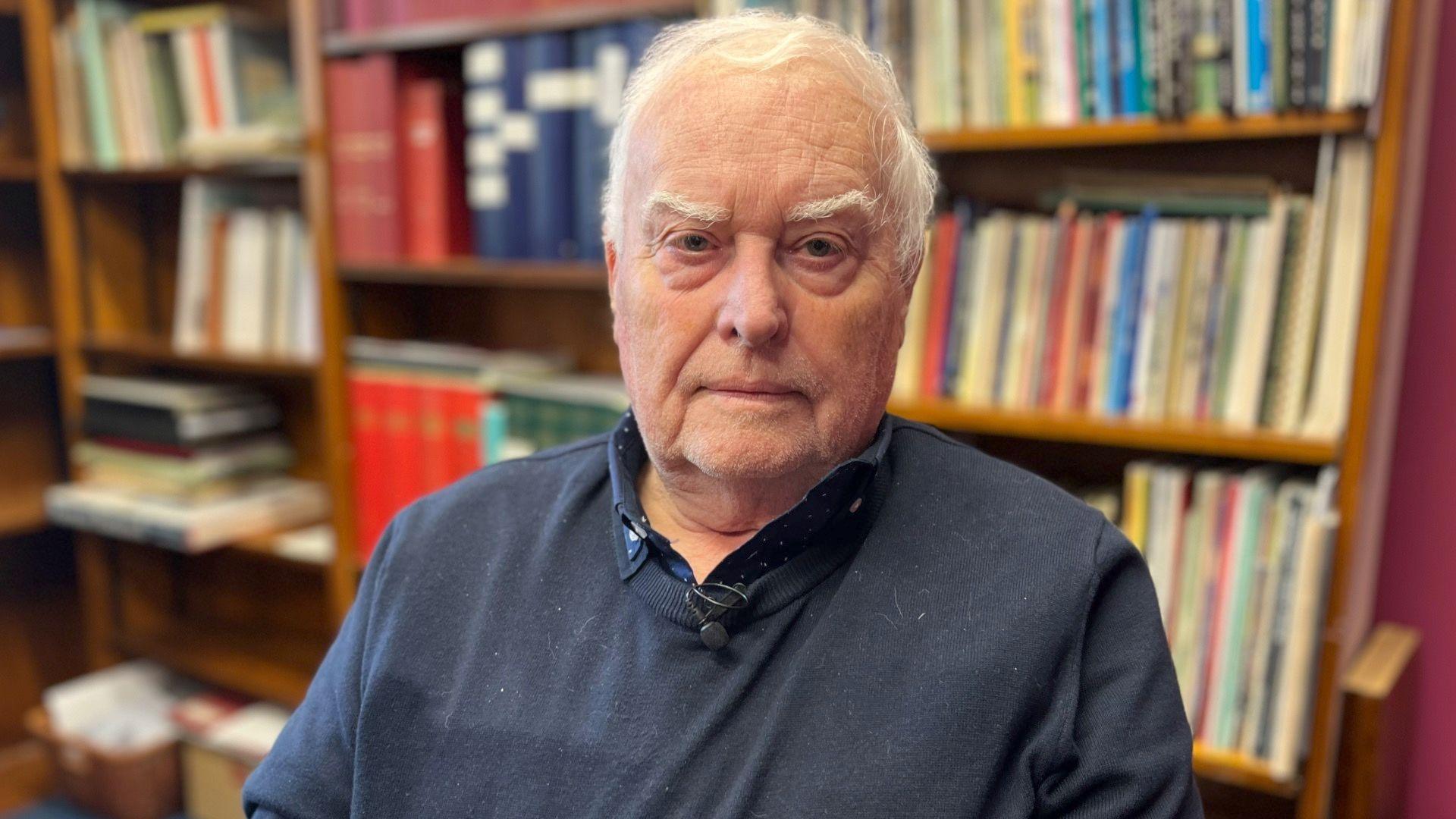Growing dispute over telecoms mast on ancient site

In Dungannon there are two very different types of structures standing side by side, dominating the town’s skyline
- Published
There is growing disagreement over an old British army communications mast on an ancient historical site in County Tyrone.
The Troubles-era mast has been there for decades and sits atop a tourist destination that many historians consider to be one of the most important sites in Ulster—the Hill of the O’Neill.
Beside the mast, a pair of ruined towers overlook Dungannon, the last remaining remnants of a grand house dating back to the 18th century.
Some emergency services, NI Water, and mobile networks still use the mast, but its future is uncertain.

The Hill of the O'Neill is known for its stunning views of several counties
NI Water own both the telecom mast and the land it is situated on at Castle Hill.
Now the water regulator and Mid Ulster District Council are at odds over its future and who might foot the bill to remove the mast or change the site.
Others consider it to be a relevant part of Northern Ireland’s recent history.
NI Water had previously proposed to jointly develop and manage a feasibility study with the council to explore options to remove, reduce, or better disguise the mast.
It was estimated that the study would cost £100,000, and a business case was completed in relation to sharing the costs with the council.
However, NI Water has said it can no longer go forward with the proposal because of funding cuts and an insufficient budget.
'This is a major tourist site'

Niall Maneely is chair of the Dungannon and South Tyrone Chamber of Commerce
In a statement to BBC News NI, NI Water said it offered to help with the feasibility study and options for mast removal, but "this study and the outcomes would need to be fully funded by MUDC”.
Independent republican councillor for Dungannon, Barry Monteith, has called for the mast to be relocated.
“This is a major tourist site that is promoted on the basis of the view. If a similar mast was on the walls of Derry, in the Titanic Quarter in Belfast, or in the Lakelands of Fermanagh, it wouldn’t be tolerated, so it shouldn’t be tolerated here.”

The telecommunications mast is used by NI Water, the emergency services and mobile phone operators
DUP councillor Clement Cuthbertson has previously criticised the prospect of public money being spent on the feasibility study.
In a social media post in July, he said: “This would be a ridiculous waste of ratepayers' money.”
The chair of the newly-formed Dungannon and South Tyrone Chamber of Commerce, Niall Maneely, said the mast being so close to an ancient site was “potentially detrimental to the character” of a popular tourist destination.
“We acknowledge the use of the mast by emergency services and mobile operators, but surely there are other locations that can provide the same service.”

James Kane is from the O’Neill Country Historical Society
James Kane from the O’Neill Country Historical Society said the mast's future was complicated.
“Obviously there are those who would like to eradicate any evidence that remains from that period in Dungannon during the Troubles, and you can understand that.
“But from a historical point of view, the mast is the last remaining artefact of what Dungannon was like in the 70s and early 80s when the barracks were there,” he said.
He added: “So there is substance to the argument of ‘why not leave the mast there?’, build it into the historical storytelling on the site, instead of the cost of removing and eradicating it completely.”
MUDC has said that the mast impacts its ability to promote and develop the site as “an important heritage and tourism asset for the region".
A council spokesperson said that it was continuing to engage with NI Water to explore ways in which the mast could be "reduced, or ideally, removed, and relocated to an alternative site".
For much of the 20th century, the site was closed to the public as it was used as police and Army barracks; it was transferred to the local council in 2007.

A museum on the site tells the story of Hugh O'Neill and the O'Neill clan
History of the Hill of the O'Neill
From the 14th century onwards, the hill was the seat of military and political power of the O’Neill clan, chosen because of its height advantage and panoramic views.
The clan's origins date back as far as the 10th century, including two High Kings of Ireland.
Hugh O’Neill became leader of the clan in 1595, but he would eventually leave Ireland in what would become known as the Flight of the Earls.
In the 18th century, a prosperous businessman, Thomas Knox Hannington, built a grand house on the site, and the ruined towers of it can still be seen today.
On a clear day, it provides views of Lough Neagh, the Sperrin and Mourne Mountains, Cavehill in Belfast, and as far as the counties of Cavan and Monaghan.